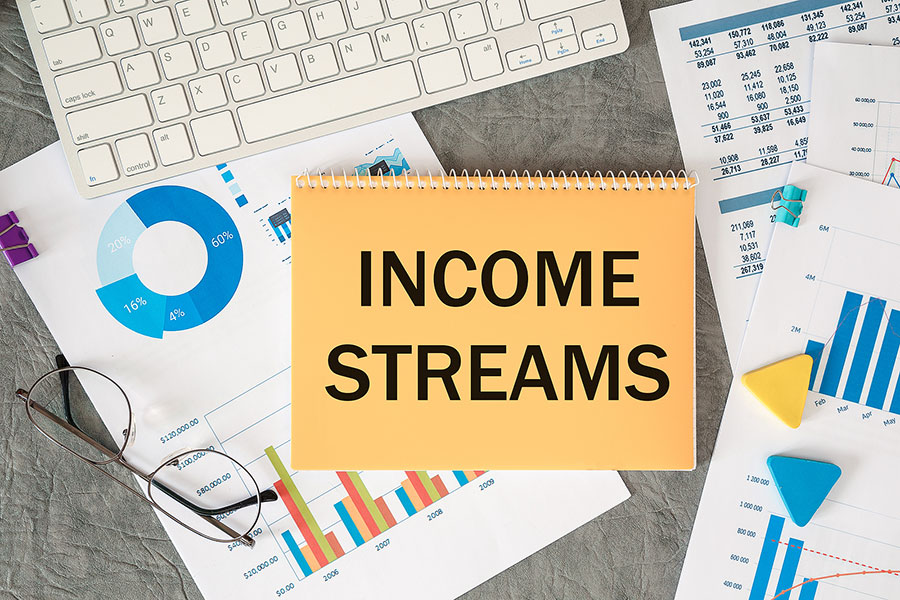This is the last step in the Basics section. You should have enough knowledge at this point of the blog to get started on your journey to financial freedom. Starting a business is a way to catapult you into wealth faster than anything else (outside of winning the lottery).
FREEDOM FROM THE CORPORATE WORLD
Running your own company allows you to have something you will never have at a job: FREEDOM. Owning your own business company allows you the freedom to not have to report to someone, to not have to rely to someone for your financial needs, to schedule your time with your family and friends however you want.
For me, my freedom from the corporate world started when I was 29. I had been working on my side web design company already for about 4 years and started making enough money to pay my bills. To be clear, the money I was making from my business was not even close to as much as I would make at a job, but it didn’t matter to me. I was making enough to pay my bills and become FREE of the corporate world. This is not to be confused with financial freedom that would allow me to stop working all together, but a freedom from working for a-holes who fired me or yelled at me for taking long lunches.
Is starting a company scary? Well, if you leave your job and put all of your life savings into a company then I would say “shit. that’s pretty scary!” Unless you have something that’s going to change the world, putting all of your eggs in one basket is pretty freaky and I hope you know what you’re doing. I had to work full time jobs for years until I built up my company to a point where I could leave my job.
So why should you give up the relative security of a job to start a company? Not only can you build something that could be valuable and you could sell at a later time for your retirement, but there are tons of other benefits to owning a company.
FINANCIAL BENEFITS OF STARTING A COMPANY
As I mentioned very early on, the United States was created to allow for entrepreneurs to come to a place where smart and hard work would lead to the American Dream. America has rewarded innovation more than any other country in the world and the smartest and most innovative people have flocked to America for decades. Anyone can succeed in America if they work hard and work smart. The best part of America is that it rewards people who start businesses. Why is that? Well, when people start companies, they put other people to work. The companies and the employees generate tax revenue to local, state and federal governments and the more companies that are started, the more tax revenue they get.
The financial benefits that the government give to entrepreneurs are enormous and incentivize people to start their own businesses. The following are some of the benefits of owning a company:
- After profit taxes
- Tax write offs
- Tax deductions
- Depreciation
The government allows you to write off expenses for a business and you don’t pay taxes on those expenses. You only pay taxes on what the business earns AFTER expenses are paid. For example, your business generates $100,000 per year in gross revenue (the amount that you collect from all of your clients). Then you have expenses:
- $300/month – Gas to drive around for clients
- $200/month – cell phone needed to talk to clients
- $100/month – internet connection to run invoices, etc
- $50/month – lease a computer to do all accounting and quotes
- $1000/month – staff to help with the business
- $500/month – eating out/entertaining clients
- $500/month – portion of your mortgage or rent for a room in the house used to do work (for example, if you pay $2500/month in rent and you use one room for work, that sq. ft. of the room can be a business write off)
- $200/month – office supplies
- $100/month – utilities
Add it all up and the above equals $2950/month or $34,500 per year. After subtracting the yearly expenses from your $100,000 of gross income this leaves a profit of $65,500 that you would pay taxes on. There are many other expenses like child care or health insurance that you can add to the above to lower your profit after expenses even more. Ideally, you would have enough expenses to lower your taxable profit as low as possible. I am not an accountant or CPA and you can’t get crazy with deductions (like deducting an entire mortgage payment for your business) because the IRS will come calling.
The main point of the above exercise is that there are many financial incentives to starting your own business and many ways to write off expenses from your business so you are paying less in taxes.
If you had a job that paid you $100,000 in California, approximately 30% of your salary goes to the government immediately. So, you are left with $70,000 in after tax money. THEN, you are paying for a cell phone, gas, entertainment, utilities etc. You are left with money that can be used for entertainment and travel and investments. In my example above, many of your every day expenses can be written off to your business and then you are paying taxes on $65,000 (30% = $19,500 in taxes vs. $30,000 in taxes at your job). Since you have already written off many of your normal expenses to your business, you have more after tax money to invest.
This is the biggest financial benefit of owning a business.










